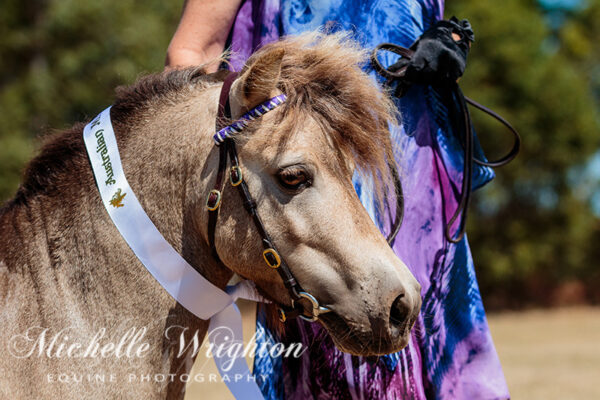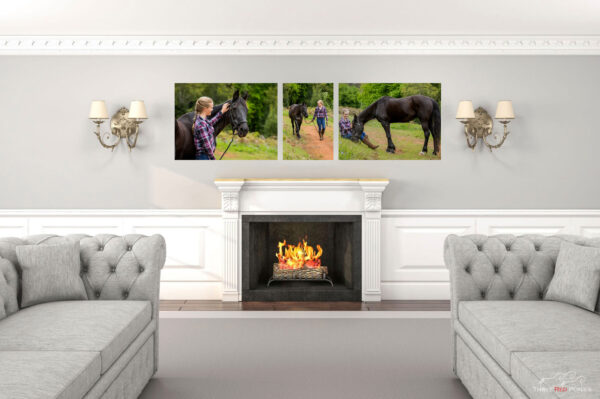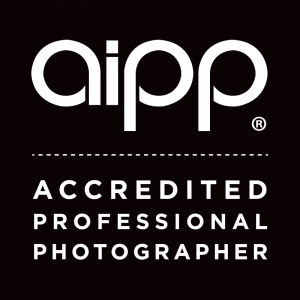I’ve had a few inquiries recently about the set-up required for the black background equine portraiture that I create, so I thought I would write a post to describe the various options and process involved with each.
There are three ways that these black backgrounds are made: completely in photoshop, with artificial light or with a combination of natural light, studio lights and environment.
Completely in Photoshop
This is the option most event photographers will use for a photo taken in sunlight. The horse is cut out or extracted from the background, or the background is simply painted over and blackened out using photoshop.
The problem with this method is it will look very un-natural and often amateurish, as if the horse has been cut out and stuck on a black background (which it essentially has been).
My background in photorealistic traditional painting has helped me develop a keen eye when it comes to lighting, light fall off and creating form from highlights and shadows. I am a digital artist as well, so I use a wacom tablet and pressure sensitive pen to manipulate the light, reflected colours and shadows so that the black background wraps around the horse’s form in a much more realistic way.
This is a very time consuming process to do well, its my least favourite way of creating black backgrounds and because the results do not look natural (depending on the light in the original photograph they can look downright awful), this is not the black background horse photography option that I offer to my private portrait clients.
2. Artificial Studio Lighting
The second way is to create the black background in-camera using artificial studio lighting. This is the most effective way to create black background portraits with minimal photoshop work needed if the facilities are right. The main problem with this method is the studio equipment required to create them is expensive and it takes considerable experience and knowledge to be able to use studio lighting equipment properly. Studio photography should never be undertaken by a photographer with little experience with horses.
Interestingly enough most horses I have used artificial lighting with are not concerned about the flash of light at all (even the hottest of thoroughbreds).
Some horses may prick their ears at the ‘pop’ when the lights trigger, but the thing most horses will be concerned about is the modifiers and softboxes that are required for studio lighting. Like most things with horses, time, experience and patience will desensitise most horses so that studio light photographs can be taken safely.
While an indoor arena is ideal for these portraits with artificial lighting, it can be done in other environments such as a big hay shed, stable breezeway or large carport. With strong enough lighting they can also be done completely outside.
Aesthetically speaking, artificial lights create more contrast in black background portraits which works particularly well on animal coats to increase the depth and shine.
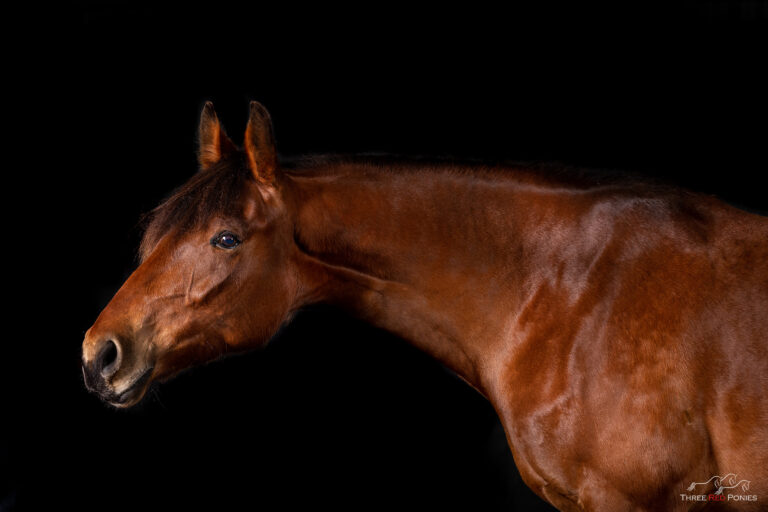
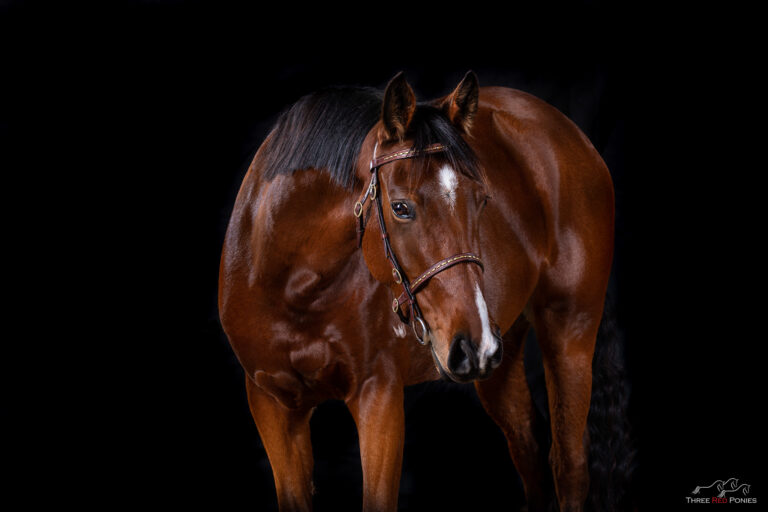
3. Natural Light
The final way black background portraits can be created is 100% in camera with no artificial light at all. This method creates natural looking images as they are created by manipulating natural light and shadow during the photography session, and then enhancing the shadows in photoshop.
The downside of the natural light method is that it does require the session to be held at a location where there is a barn, shed, stable or carport to create the shadow/darker area behind the horse.
The horse is positioned at a specific point where the natural light and shadow meet in harmony, this positioning will change depending on the actual building being used as well as the size of the horse.
Professional quality camera equipment is required for the best results. Depending on the colour of the horse and other variables, it can be necessary to under-expose the photo which causes all sorts of problems with noise, soft focus and quality degradation with camera equipment that cannot handle low light well.
Black background portraits created with this method take skill in photoshop or lightroom to process, but the end result when done well, is a natural looking photograph.
I prefer the second and third methods when I create black background portraits, depending on my client’s preference for the look of the final images, how the horse responds to the equipment and the facilities available at the session location.
When using artificial lighting I always take the time needed for the horse to adjust to the umbrella, softbox and backdrop stands, using the same training principles that I use with my own horses (think Warwick Schiller, Ray Hunt, Tom Dorrance, Buck Brannaman et al).
Knowing how to shoot these sessions with 100% natural light as well as with portable studio equipment means that if your horse happens to be one of those that does not desensitize to studio lighting equipment, I will still be able to create beautiful fine art black backgrounds portraits for you.
Conversely, white background portraits can be created using natural light by simply positioning the horse against big open sky or by using a white studio backdrop. I offer both black and white backgrounds for my clients, the specific method used will depend on the environment the horse is in.
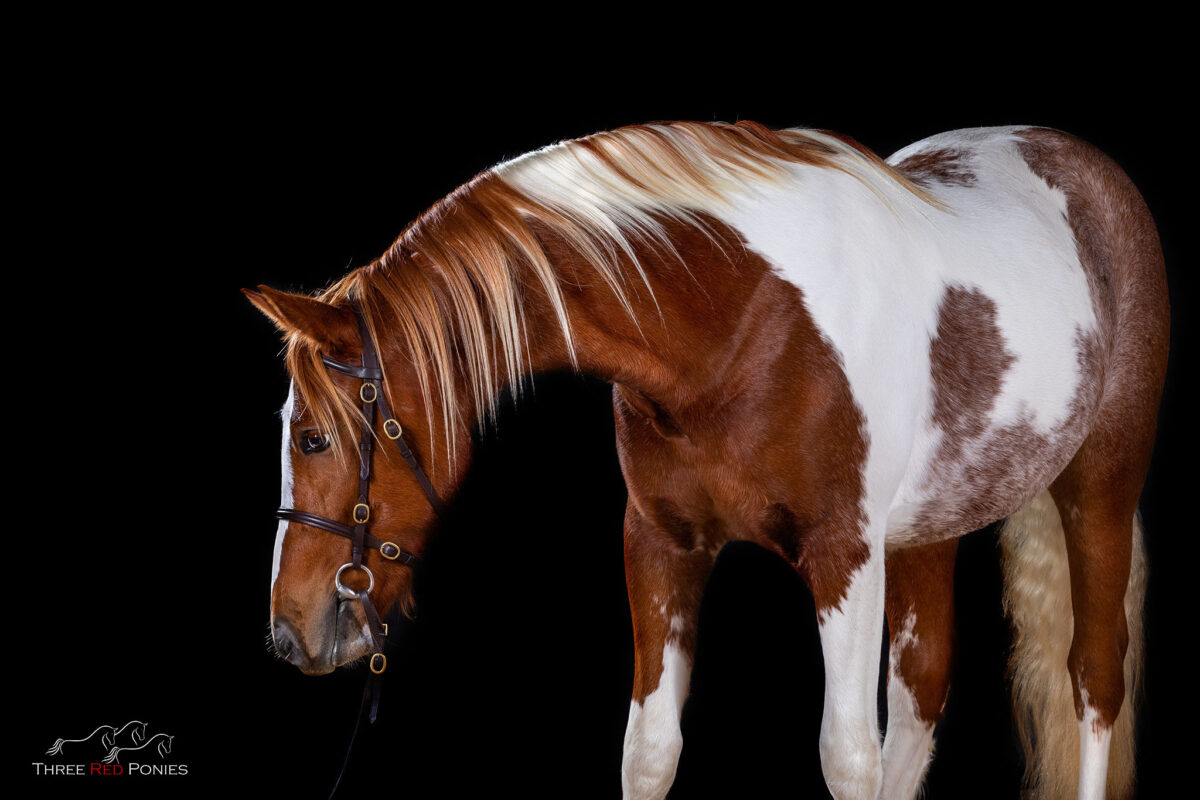
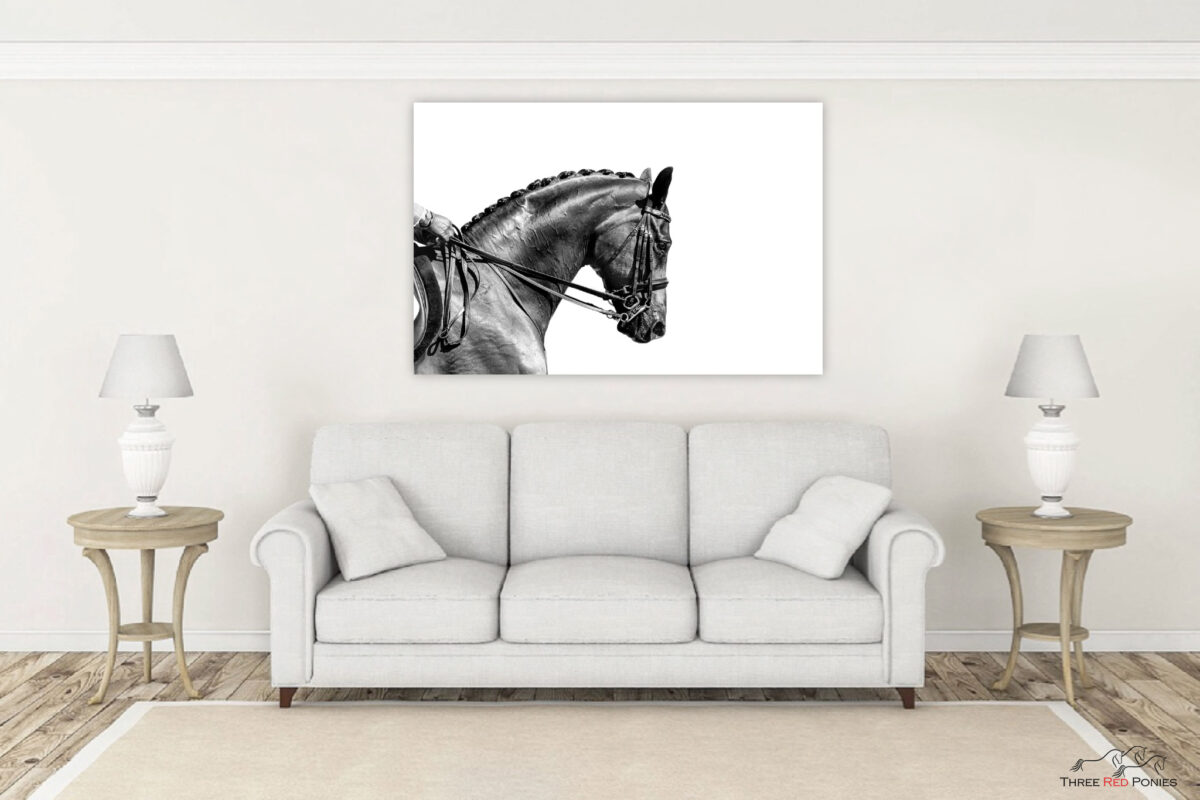
Book your fine art black background equine portrait photography session here or contact me for a chat if you would like to know more about creating some beautiful portraits of your equine soul mate.

